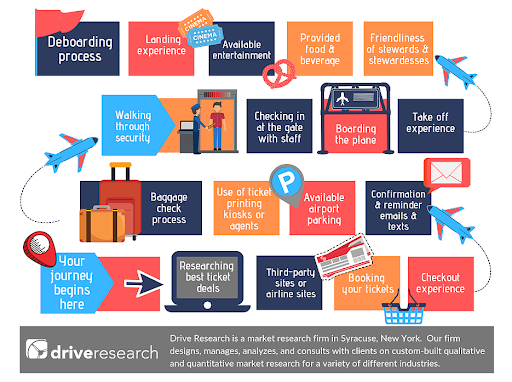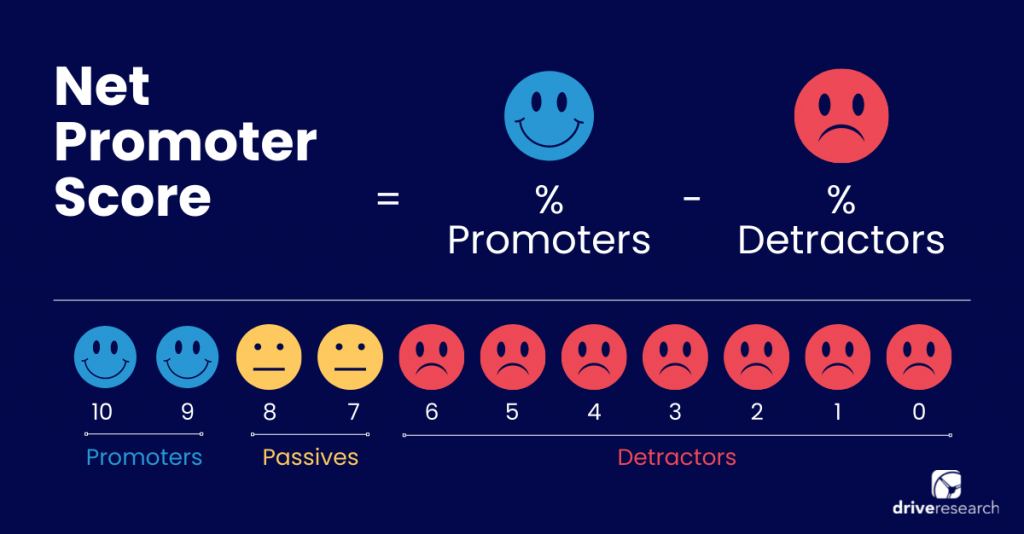
Improving customer experience is the most important move you can make for your brand.
That’s because customer experience strategies come with many benefits, including improved customer retention, increased customer acquisition, and better online reviews and testimonials.
Since customers are the foundation of all companies, their needs must be made a priority.
All too often, brands overlook the needs of their buyers, leaving them unhappy and ready to switch to a competitor. By working to improve the customer experience businesses can look forward to a lasting relationship with their base.
Here’s how.
Why Improving Customer Experience Matters
Boosting customer retention efforts raises profit margins in a few key ways.
Increase Profit Margins
First off, it increases the customer lifetime value (CLV) significantly. CLV refers to the timeline from when a customer makes their first purchase to their last from a brand.
Essentially, this metric measures how much money a customer will generate from a brand.
Secondly, measuring customer experience gathers important insight from your target audience, as we know. This data can be used to drastically improve the quality of certain products and services.
As a result, this will likely trigger more customers to want to invest in these offerings, driving revenue.
Reduce Operating Costs
Put simply, attracting new customers is expensive.
It takes time and money to create new campaigns and other outreach methods to draw in new shoppers. By retaining customers, businesses can save on costs.
Since the customers are already loyal to the business, less money can be spent creating campaigns to reach new audiences.
That said, it’s still necessary for businesses to reach new consumers.
Doing so will likely create new customers that may turn into loyal followers of your brand. However, prioritizing existing customers is truly at the core of a continuously evolving brand.
Improves Branding
A great customer experience strategy also improves branding. When customers are pleased, they’ll naturally spread the word of their good experience with a brand – think of this as word-of-mouth marketing.
But the same thing can happen when brands have less-than-ideal customer strategies in place.
Just as they’re likely to spread the word about a good experience, customers have no problem being loud about a poor one too!
Improves Customer Loyalty
Lastly, improving the customer experience also helps with loyalty. Customers will stick with a brand they support for the long term, with up to 59% of them staying loyal for life.
This is simple: the more customers enjoy a brand and stay loyal, the more likely they are to buy products. What’s more, customers are also more likely to branch out and try new products as well.
In short, improving customer experience can massively boost the success of a business.
12 Best Ways To Improve Customer Experience (Tested & Proven)
The key to any customer experience strategy is to ensure that they can communicate effectively with a brand. Even more important is the brand’s willingness to listen to customers.
Below, we’ll cover some of the best ways to employ customer experience strategies.
1. Empower Your Employees To Interact With Customers
Put simply, each customer requires a different level of interaction.
For example, have you ever had a difficult time shopping experience (in-store or online)? It’s pretty frustrating when no one is around to answer a question.
This is why businesses should motivate employees to interact comfortably with customers.
This promotes communication and can nip issues in the bud. If a customer has a question or a concern, they need to know an employee will be around to answer questions and provide advice.
2. Visualize Your Customer Journey
Creating a customer journey will allow brands to gain a better understanding of their shoppers.
The term “customer journey” refers to the very first interaction a shopper has with a brand to their last, sometimes even post-purchase, experiences.
Tracking a customer’s journey is necessary for brands to understand how shoppers interact with their brand.
Common benefits of tracking the customer journey include:
- Understanding customer needs
- Learning customer patterns
- Improve issues with current customer experience programs
For more context, here is an example customer journey map our customer experience company created for an airline.

3. Get Feedback From Customers
Surveying customers is the best way to get their feedback.
A simple customer satisfaction survey is the most common way to go about this. Partnering with a third-party research team is ideal here, as they have a deep understanding of how to create and send out an effective survey.
Customers will be asked about their shopping experience – what worked, what didn’t, and what they would suggest.
Running these surveys regularly will uncover common pain points and trends. With this data, businesses can continuously improve their customer experience strategy.
Recommended Reading: Conducting Customer Satisfaction Surveys [Ultimate Guide]
4. Take Employee Feedback As Well
Employees are also integral to the customer experience.
Happy employees are far more likely to put effort into customer outreach strategies. Additionally, customers will be able to pick up on the fact that employees are enthused and helpful.
Therefore, employee surveys are a great way to ensure staff is thriving. These surveys, similar to those given to customers, will be distributed online to employees.
They cover common employee concerns that encompass work-life balance, overall happiness levels, pain points, and more.
This data will be used to improve employee conditions, thus leading to a better employee/customer connection!
5. Use Voice of the Customer programs and services
Employing voice of customer (VoC) research is yet another way to gather important details about the shopper’s experience.
Two common VoC methods include surveys, which we’ve covered, and focus groups.
Focus groups gather detailed data points about the customer experience from a small group of shoppers. Led by a moderator, they will be asked to discuss certain aspects of the shopping experience.
Other common VoC methods to help improve customer experience include:
- User experience research
- Mystery shopping
- Intercept surveys
No matter the type of method used, VoC research aims to gather key data points that can help businesses transform their customer outreach methods.
6. Personalize For Customers When Possible
Customers enjoy personalized experiences. Put yourself in their position: Are you more likely to shop from a store that personalizes the shopping experience or one that doesn’t?
We all know the answer to that!
Personalizing the shopping experience can look like…
- Tailored suggestions based on past purchase
- Newsletters
- Special deals
Customers will take note of this, as it implies a brand truly values their experience. In addition, it will also add to customer retention efforts.
7. Don’t Rely On One Channel – Omnichannel Is Key
Ensuring customers have easy access to all areas of a business is essential!
This means creating a smooth omnichannel experience for customers to effortlessly access your services, from online to mobile platforms.
It’s important for each channel to have a smooth user experience to ensure customers can meet their needs easily.
Creating a personalized shopping experience–whether it’s in-store, online, or on an app, is also key to reliable omnichannel strategies.
Ideally, a personalized shopping experience prioritizes customers by using past data on behaviors, preferences, and related topics.
Lastly, the best omnichannel experiences offer customer support options. This includes real-time options like in-app or online live chats to assist customers throughout their journey.
8. Use Customer Experience Software and Tools
Customer experience software provides insight where other methods may fail.
For example, these types of software often allow businesses to track key aspects of the customer journey by providing customer feedback and data.
By collecting and analyzing this data, businesses can effectively manage their customer outreach strategies based on accurate feedback straight from the source.
Of course, using the data gleaned from customer software tools, businesses can improve the way they interact with shoppers.
This will likely lead to increased communication and personalization of the entire customer experience, creating a bond between the business and its shoppers.
9. Collect Various Types of Feedback
As we covered, a great way to gather customer feedback is through the use of surveys.
By asking a variety of different questions, there will be plenty of variety within the responses. This only enhances the quality of the feedback, providing a well-rounded view of customer needs.
Another way to gather customer sentiment is by calculating net promoter score (NPS).
Asked on a scale from 0 to 10, customers are asked to gauge how likely they are to recommend the services of a business. Responses are broken up into three groups: promoters, passives, and detractors.
Promoters love the brand, passives like it but may swayed by other brands, and detractors are not fans at all.

By analyzing these responses, businesses can continue to target customer pain points and improve their experience.
Encouraging customers to leave reviews is also a simple way to gauge their happiness levels with your brand.
It’s key to keep a regular eye on the reviews coming in about your brand as well. That way, if a lower rating appears, it can be addressed promptly.
10. Improve Customer Service
When it comes to improving the shopping experience, it’s essential the customer service is outstanding.
Customers want to feel supported at all times, especially when they have questions and concerns.
With 8 in 10 shoppers having negative experiences when interacting with customer service, it’s essential businesses have a grasp on this tool.
Remember when touched on employee relations earlier?
They play a huge role in perfecting your brand’s customer service strategies. Ensure staff are equipped with the proper information and skills to effectively manage customer woes.
Additionally, it’s also key to ensure your customer service process is running smoothly. This includes reducing wait times and boosting efficiency throughout the entire process.
11. Act on Customer Feedback
Customer feedback is only helpful if you use it! What’s more, using customer feedback correctly is the key.
First and foremost, spend time carefully analyzing customer feedback. This will ensure improvements made are relevant to pain points brought up in the survey responses.
After the responses are carefully reviewed, they can be implemented (when necessary). Using customer pain points to improve current systems in a business is one of the best ways to improve the customer experience.
What’s more, making these improvements will show customers that your business values their opinions.
If you continuously send out surveys without making changes, customers will notice. However, if you make changes based on their feedback, this will be apparent and strengthen the customer/business relationship.
Frequently Asked Questions About Improving Customer Experience
As you can see, a lot goes into customer experience. Let’s tackle some common questions below!
How would you improve customer experience?
As a full-service customer experience market research company, Drive Research specializes in surveys, focus groups, mystery shopping, and more. Based on your unique project objectives, timeline, and budget, our team can recommend the best approach to improve customer experience.
Are customer service and customer experience the same?
While these two terms may seem the same, they have separate meanings.
First off, customer service is the direct outreach strategy that affects shoppers. This includes answering questions, concerns, and other relevant customer queries.
Customer experience describes the overall strategy a business has that caters to shoppers. Customer service would fall under this umbrella. It’s safe to say that if a business has poor customer service, then it needs to fix its customer experience strategy.
How do you create a CX strategy?
Creating a customer experience strategy starts with research. This research is often in the form of surveys, but can certainly be conducted in the strategies we listed earlier (focus groups and so on).
The chosen strategy is directly related to the needs of a business. Once a strategy has been chosen, businesses can go ahead and begin research.
The key components that go into developing a customer experience strategy include…
- Understanding who customers are
- Knowing what customers need
- Developing a plan to collect customer data
- Using that data to better the customer experience
- Create an ongoing customer experience program
Contact Our Customer Experience Company
Unlock the power of consumer insights and elevate your brand with our cutting-edge customer experience market research services. From surveys to focus groups to mystery shopping, Drive Research offers end-to-end research methodologies to equip your business with the insights needed to improve customer experience.
Contact our customer experience company today.



